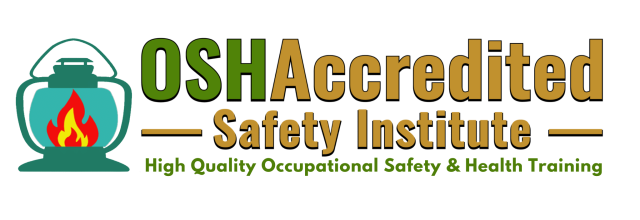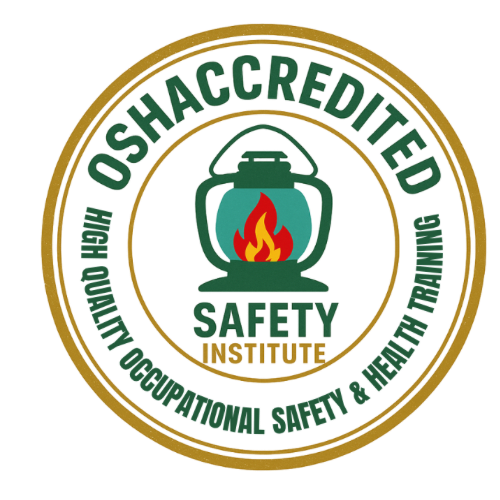Conducting Health and Safety Training: A Vital Element for Workplace Success
Conducting Health and Safety Training: A Vital Element for Workplace Success
In any workplace, one of the most important aspects of maintaining productivity, employee well-being, and legal compliance is ensuring that safety is a priority. Safety and health training are an essential component of this effort. Whether conducted in-person or through online platforms, safety training equips employees with the knowledge and skills to handle potential hazards and avoid accidents. In this blog, we will explore the benefits of health and safety training, how to conduct effective safety training, and why it is crucial for employee safety and organizational success.
What Is Safety Training?
Safety and health training involve providing employees with the necessary education and awareness to recognize workplace hazards, reduce the risk of accidents, and handle emergency situations effectively. It can cover a wide range of topics, including workplace ergonomics, hazardous materials handling, machinery operation, fire safety, bloodborne pathogens, and personal protective equipment (PPE) use. The goal of safety training is to create a safer and healthier work environment, improve OSHA compliance and regulations, and minimize workplace injuries and accidents.
Why Is Safety Training Needed?
Frequency of Injuries and Accidents
Accidents are an inevitable part of life, but they can often be prevented through proper safety training. According to the U.S. Bureau of Labor Statistics, workplace injuries and accidents result in millions of dollars in medical costs, lost productivity, and workers’ compensation claims each year. In 2022 alone, there were 2.6 million nonfatal workplace injuries and illnesses reported in the private sector. Many of these incidents could have been prevented if employees had received adequate safety training. By providing employees with the knowledge of how to safely navigate their work environment, employers can significantly reduce the risk of injury.

Meeting OSHA Requirements
The Occupational Safety and Health Administration (OSHA) sets forth safety regulations that employers must adhere to in-order to ensure a safe working environment. One key requirement is that employers must provide safety training to their workers on various safety standards and protocols. OSHA training courses are specifically designed to help employees understand safety standards and prevent accidents. By investing in health and safety training, companies can avoid costly fines and ensure that they are in-compliance with OSHA regulations.
Training Needs Analysis
Before initiating any safety training, it is essential to conduct a training needs analysis (TNA). This analysis helps employers determine the specific safety concerns of their workplace, the hazards employees face, and the knowledge gaps that need to be addressed. TNA involves reviewing incident reports, speaking with employees, and evaluating the work environment. By identifying these needs, employers can create a more tailored and effective training program.
Assess Training Needs: Conducting Needs Analysis
A Guide to Conducting a Training Needs Analysis
https://www.aihr.com/blog/training-needs-analysis/
Training Needs Assessment
https://www.opm.gov/policy-data-oversight/training-and-development/planning-evaluating/
Equipment Needed for Conducting Safety Training
To conduct effective safety and health training, certain equipment is necessary. This may include audiovisual tools such as projectors or computer screens for presentations, printed materials like handouts and manuals, and props or equipment used for demonstrations (e.g., fire extinguishers, first aid kits, safety harnesses). In some cases, employers may also need specialized tools, such as personal protective equipment (PPE) or machinery, for hands-on safety training. Ensuring that the right equipment is available before the safety and health training session is essential to creating a successful program.
Pre-Training Preparation
Before conducting safety training, it is vital to prepare. This preparation can include organizing materials, ensuring that the safety and health training space is suitable, and setting clear objectives for the session. Preparation also involves understanding the audience: the employees. Knowing their existing knowledge of safety awareness, their job functions, and any potential learning barriers can help ensure the safety training is relevant and effective.
Setting Training Objectives
The objectives of safety training should be clear and measurable. For instance, the training might aim to ensure that employees can properly use PPE or identify hazardous materials in the workplace. Setting specific goals enables trainers to evaluate whether the health and safety training was successful and allows employees to understand what they are expected to learn.
Ice Breaker and Class Size
To foster an engaging and relaxed learning environment, using an ice breaker at the beginning of the session can be beneficial. This helps participants feel more comfortable and open to learning. Regarding class size, it is important to balance the number of trainees to ensure personalized attention. Large groups can be difficult to manage, while smaller groups may not maximize training resources. Typically, class sizes of 15 to 20 participants work well for most safety training sessions, though this may vary depending on the content.
Class Management: Seating Arrangements and Lighting
The physical setup of the safety training space is crucial to the learning environment. Proper seating arrangements ensure that all employees can see and hear the trainer clearly. For example, a U-shape or classroom-style arrangement can encourage interaction. Lighting is equally important: it should be bright enough to ensure everyone can read materials and see demonstrations but not too harsh to cause discomfort. Temperature control and minimizing distractions also contribute to a positive learning experience.
Maintaining Employee Attention
Keeping employees engaged during safety training can be a challenge, especially when the topic might seem dry or routine. However, maintaining attention is critical for effective learning. Using a variety of teaching methods, such as videos, demonstrations, group discussions, and quizzes, can help keep employees interested. Interactive elements like role-playing scenarios or case studies related to safety can also enhance learning by encouraging participants to think critically.

Giving Breaks
Safety training sessions, especially those that run for an extended period, should include breaks to help employees stay focused and energized. Short breaks every 60 to 90 minutes of 5 to 10 minutes allow adult participants to rest, stretch, and refresh. Breaks also offer opportunities for informal discussions or clarifications about the material.
The Importance of Demonstrations, Simulations, and Practice
Demonstrations and simulations play a crucial role in health and safety training. When employees can see safety, procedures demonstrated by an expert, they are more likely to remember and apply them. For example, demonstrating how to properly lift heavy objects or how to perform CPR can have a significant impact on the retention of knowledge.
Simulations, such as mock emergency scenarios or safety drills, provide a safe environment for employees to practice responding to potential hazards. These realistic simulations allow employees to gain hands-on experience without the risks associated with actual emergencies. Providing employees with the chance to practice safety skills ensures that they are ready to act appropriately when faced with real-life situations.
Benefits of On-the-Job Training (OJT)
On-the-job training (OJT) is a highly effective method for teaching safety because it involves employees learning in the environment where they will actually-perform their duties. This hands-on approach allows employees to become familiar with specific safety protocols, equipment, and procedures they will use daily. OJT also provides immediate feedback from trainers, which can help reinforce proper practices. Moreover, OJT fosters a deeper understanding of safety procedures by allowing employees to practice and learn in real-time.

Training Evaluation
Once the training has been conducted, it is important to evaluate its effectiveness. This can be done through feedback surveys, quizzes, and assessments of how well employees apply the safety knowledge in their day-to-day work. Continuous evaluation helps identify areas where the training may need improvement or updating. Regular assessments also ensure that safety standards are maintained, and the safety and health training is having the desired impact.
Conclusion and Summary
In conclusion, conducting effective safety and health training is an essential part of fostering a safe and compliant workplace. By providing employees with the necessary tools, knowledge, and experience, companies can reduce the likelihood of accidents, ensure compliance with OSHA regulations, and ultimately create a more productive environment. Health and safety training, whether online or in-person, is an investment that reaps long-term benefits in the form of fewer injuries, reduced costs, and a healthier work environment.
Employers should carefully plan their safety training programs, taking into-account training needs, objectives, equipment, and class management. Incorporating hands-on learning through OJT, demonstrations, and simulations further enhances the learning experience, helping employees retain crucial safety information. Finally, evaluating the safety training effectiveness ensures that safety standards continue to be met and improved over time.
By prioritizing safety and health training, employers not only comply with legal obligations but also show a strong commitment to their employees’ well-being. Ultimately, safety is not just a responsibility—it’s a culture that should be embraced throughout the organization.
Author: Dr. O’Neil G. Blake, Chief Executive Officer (CEO) of OSHAccredited Safety Institute
MS., MBA., MSc., BSc, CSP., ASP., CSHM., CSMP., MRSA.
Date: 12-29-2024












